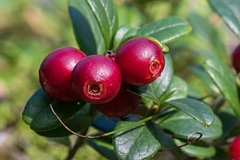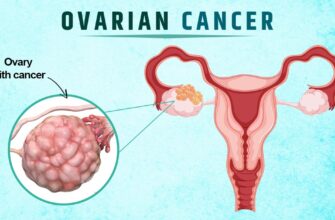
For centuries, the humble lingonberry has graced tables and traditional remedies across northern latitudes. Often overshadowed by its more famous cousin, the cranberry, this small red berry is now stepping into the scientific spotlight, revealing a unique and powerful ability to safeguard our urinary tracts. Recent findings published in Frontiers in Nutrition suggest that lingonberries could be a game-changer in the fight against a persistent and increasingly problematic health issue: urinary tract infections (UTIs).
The implications of this research are substantial. As the world grapples with the escalating crisis of antibiotic resistance, discovering natural, antibiotic-free methods of preventing common infections like UTIs offers a beacon of hope. It seems that sometimes, the most profound solutions lie hidden in plain sight, or in this case, nestled amongst the evergreen foliage of a boreal forest.
The Persistent Problem of UTIs
Urinary tract infections are, unfortunately, a common affliction, particularly among women. Caused predominantly by the bacterium Escherichia coli (E. coli), UTIs can range from uncomfortable to debilitating. Recurrent infections are a significant challenge, often leading to repeated courses of antibiotics. While effective, this frequent use contributes to the very problem we aim to avoid: bacteria evolving to resist our medical arsenal. The quest for alternatives has never been more urgent.
Unpacking the Lingonberry`s Secret Weapon
So, what makes the lingonberry so special? The answer lies in its rich composition, specifically a group of compounds known as proanthocyanidins (PACs). These powerful plant compounds don`t kill bacteria outright, which is often the antibiotic approach. Instead, they employ a far more sophisticated strategy:
- Preventing Adhesion: The PACs in lingonberries act like a biological Teflon coating for the bladder. They alter the surface of the bladder walls, making it incredibly difficult for E. coli bacteria to attach. Without a grip, these unwelcome invaders are simply flushed out with urine, unable to initiate an infection.
- Disrupting Biofilms: Beyond initial attachment, bacteria often form resilient communities called biofilms. These slimy structures protect bacteria from antibiotics and the body`s immune system, making infections much harder to eradicate. Lingonberry PACs have been shown to interfere with the formation and integrity of these biofilms, dismantling the bacteria`s protective fortress.
This “anti-adhesion” mechanism is a crucial distinction. It doesn`t put evolutionary pressure on bacteria to develop resistance, offering a sustainable approach to prevention. It`s a testament to nature`s ingenuity, providing a solution that works *with* the body`s natural defenses, rather than overpowering them.
Beyond the Bladder: The Gut Connection
The lingonberry`s influence doesn`t stop at the urinary tract. The research highlights another fascinating aspect: its interaction with the gut microflora. When consumed, the polyphenols within lingonberries are metabolized by gut bacteria, transforming them into even more active compounds. This conversion isn`t just a digestive process; it`s an enhancement of the berry`s antimicrobial potential, creating a systemic boost to the body`s natural defenses. It underscores the intricate connection between our diet, our gut health, and our overall immunity – a holistic approach that modern science is only beginning to fully appreciate.
From Folk Remedy to Modern Medicine
While this research unveils the precise scientific mechanisms, the idea that lingonberries (and similar berries) are beneficial for health is far from new. Indigenous cultures and traditional medicine systems have long utilized these vibrant berries for various ailments, including those affecting the urinary system. It`s a classic case of modern science validating what generations of empirical observation had already established. One might even muse that our ancestors, without the aid of electron microscopes or peer-reviewed journals, simply observed that “eating these berries seems to keep certain troubles at bay.” Now, we finally understand why Grandma was right.
The Road Ahead: Optimal Application
While the findings are exciting, scientists are not resting on their laurels. The next critical steps involve determining the optimal dosages and delivery methods for lingonberry-based interventions. Whether it`s concentrated extracts, functional beverages, or simply incorporating more fresh berries into our diets, understanding the most effective way to harness this natural powerhouse is key to its widespread medical application. Clinical trials will be essential to translate these promising laboratory results into concrete health recommendations for the public.
A Future with Fewer Antibiotics?
In an era where antibiotic resistance threatens to undermine decades of medical progress, the discovery of a natural, effective preventive agent like the lingonberry is genuinely significant. It offers a viable strategy to reduce reliance on antibiotics for recurrent UTIs, preserving these vital medications for when they are truly indispensable. As research continues to unfold, the unassuming lingonberry may well usher in a new chapter in natural health and preventive medicine, reminding us that sometimes, the most powerful solutions are cultivated not in a lab, but in the wild, waiting patiently to be fully understood.







